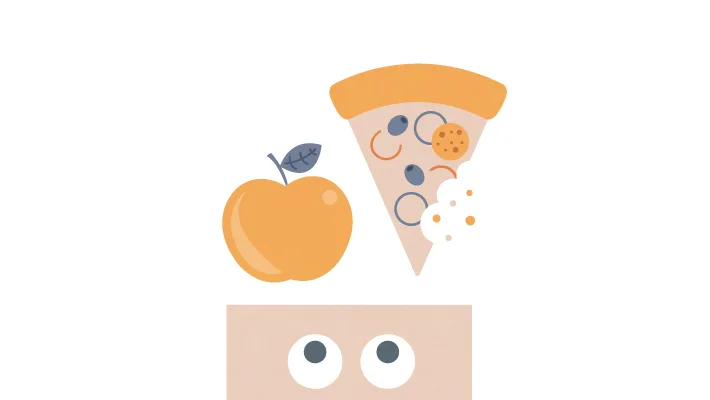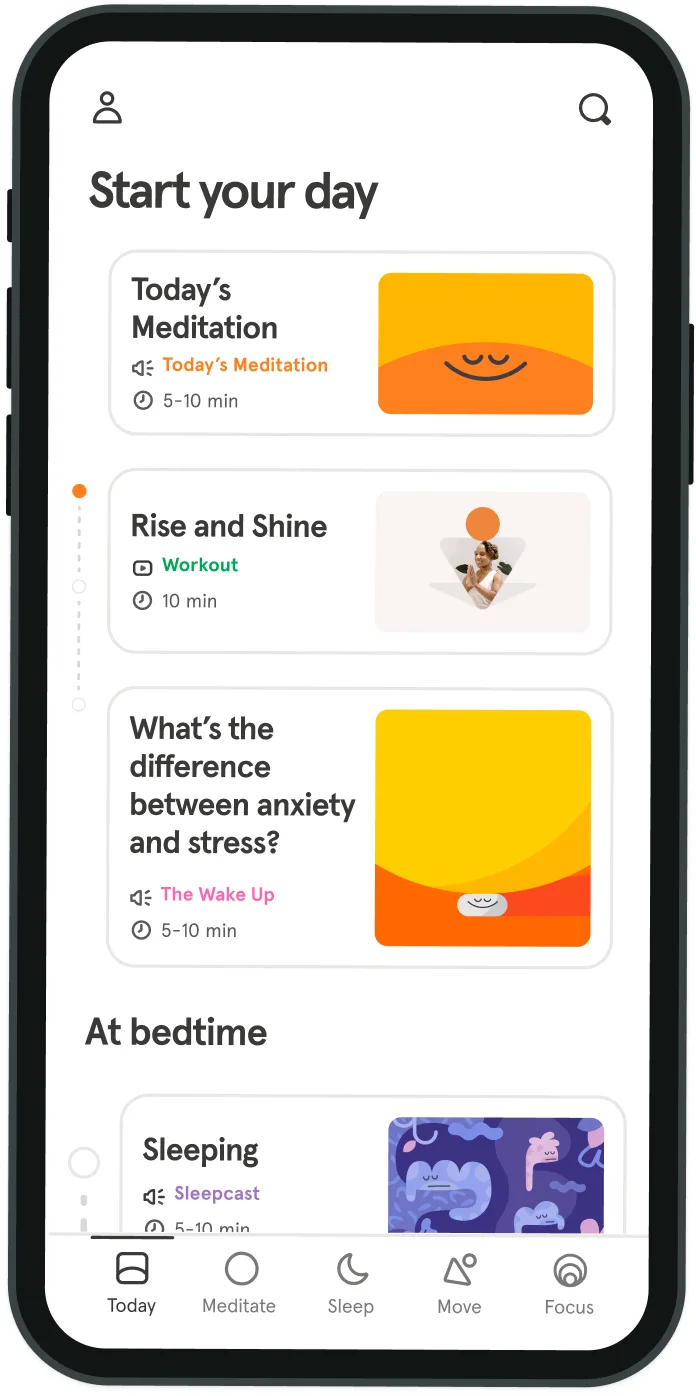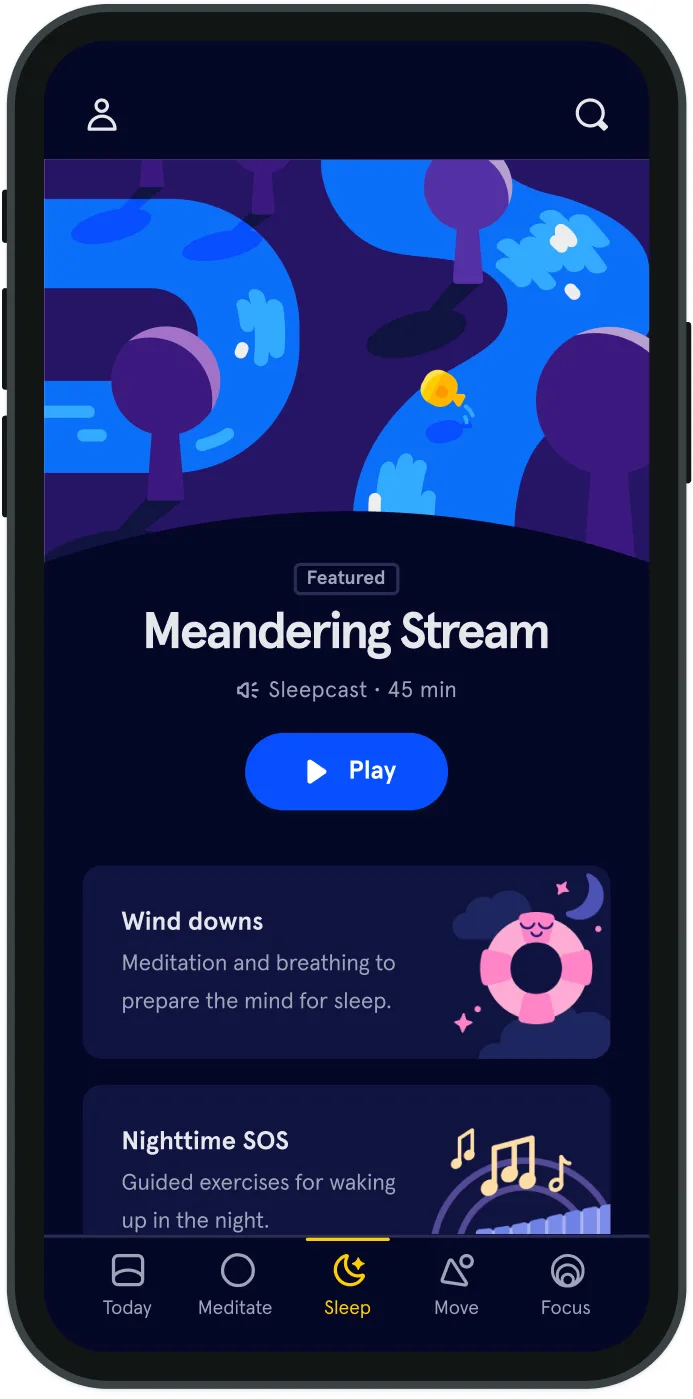Training the mind to stick to a healthy food plan
Below is an extract from Andy's book The Headspace Diet which gives a great introduction to food and diet. Learn how to stick to a healthy food plan - the Headspace way.
How often do you think about it? About food, that is. Seriously, on any given day, how many times do you think about food or the effect food has on your body? Not just what you want to eat, but also what you ate in the past or what you plan to eat in the future? Be sure to include the number of times you wish you hadn’t eaten something in the past, and also what you’re planning not to eat in the future. Now add that every thought you ever have about your body image and the way you look. That includes every thought expressing contentment with how you look, as well as every thought in which you wished you looked different. Hard to measure, I know, but how many thoughts a day do you think that is? Research figures vary on this question, reporting that the number of thoughts that people have about food alone can be anything up to 200 a day. However, I suspect that figure may well be substantially higher, especially when thoughts about body image are thrown into the mix. For many, food is the first thing they think of in the morning and their body image is the last thing they think of at night. These thoughts stand like bookends at either end of the day, sandwiching feelings of craving and resistance, appreciation and discomfort, satisfaction and guilt. In fact, it’s hard to imagine another topic that consumes more of our valuable headspace. Now that’s not to say that there’s anything inherently wrong with daydreaming about chocolate fudge cake, in fact it’s quite normal. It’s just that if the wandering mind is left unchecked, it can lead us down a path that we’ll probably later regret. Oh, and just in case you’re wondering about any other potential contender for this top spot, apparently women report thinking about food at least twice as many times as they think about having sex. And whilst for men that figure is lower, food still just tops the stakes in the overall thought-count. Over the years there’s been a huge amount of public education on what foods we should eat and what we shouldn’t, which foods are healthy and which foods are unhealthy. This is a good thing. This is information that everyone should possess. Admittedly, this information is often a little conflicting, and a ‘superfood’ hailed one week for its cancer-preventing, fertility-enhancing, fat-metabolising properties will almost inevitably, later be dismissed for its cancer-inducing sterility promoting, obesity-causing qualities. But on the whole, most of us now know what we need to eat to be healthy, right? We know the rules, we know what foods promote good health and we know what foods, when consumed in excessive quantities, tend to lead towards weight-gain, obesity, hypertension and heart disease.
And yet nothing changes. The number of people who are overweight continues to rise, the number of people who are obese continues to rise, as do the number of people suffering from heart disease, diabetes, eating disorders, allergies, intolerances and everything in-between. So why is this happening and what can we do about it? The starting point is to recognize that in this situation when we have freedom of choice (and there are many sections of society where this is not always the case), the food itself is not the root cause of obesity, or of being overweight. Sure, it plays an important part, but the decision of what to consume stems from our own mind. Whilst it may well be influenced by many contributing factors, the decision to choose ‘this’ food over ‘that’ comes from a thought, a feeling and the willingness to engage and follow that thought or feeling. Now this isn’t an excuse to beat yourself up for the way you eat or the way you look. The mind is a powerful thing and, untrained, is a slave to both emotion and habit, which can feel so overwhelming. Remember, this isn’t about blaming yourself (or anyone else). This is about trying to understand the root of the problem, so that you can create the conditions for positive change in the future. Food is simply the object of fascination and distraction; it is not the cause of it. It has no real power in and of itself; it just sits there, waiting to be eaten (or not eaten). The decision whether to eat is ultimately yours alone. And this is important, because if the decision is yours, then you have freedom, you have the potential for change, the potential to be happy with who you are and how you look, at a weight that is comfortable, natural and right for you. The processes at play in the mind are surprisingly straightforward, it’s just that usually everything is happening so fast that there’s not really time to take it all in. The physical action of reaching out for food and putting it in your mouth does not happen by accident. For a hand to reach out and pick up that next slice of pizza, tub of ice cream or glass of wine, it requires a signal from the brain. This signal might have been prompted by any number of thoughts, emotions, or physical sensations, and in many ways it doesn’t really matter which of those it was. The important thing is that we create enough headspace and clarity to ensure that we don’t necessarily follow that impulse. But, again, why does it happen in the first place? Why do we do what we so desperately don’t want to do? And why do we so often feel powerless to resist the urge of a fleeting emotion?

Now this isn’t an excuse to beat yourself up for the way you eat or the way you look. The mind is a powerful thing and, untrained, is a slave to both emotion and habit, which can feel so overwhelming.
Headspace


Be kind to your mind
- Access the full library of 500+ meditations on everything from stress, to resilience, to compassion
- Put your mind to bed with sleep sounds, music, and wind-down exercises
- Make mindfulness a part of your daily routine with tension-releasing workouts, relaxing yoga, Focus music playlists, and more
Meditation and mindfulness for any mind, any mood, any goal

Stay in the loop
Be the first to get updates on our latest content, special offers, and new features.
By signing up, you’re agreeing to receive marketing emails from Headspace. You can unsubscribe at any time. For more details, check out our Privacy Policy.
- © 2025 Headspace Inc.
- Terms & conditions
- Privacy policy
- Consumer Health Data
- Your privacy choices
- CA Privacy Notice
